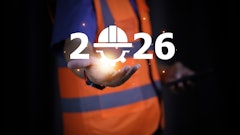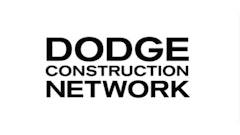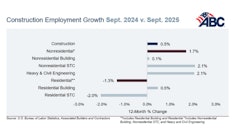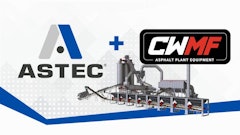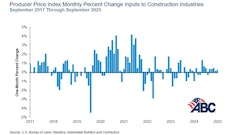
Despite ongoing labor shortages and rising costs, commercial service contractors are entering the second half of 2025 with cautious optimism, according to a new industry report from ServiceTitan and Thrive Analytics.
More than two-thirds of contractors surveyed reported stable or growing revenues through May, and 53% are optimistic about the market outlook for the rest of 2025 and beyond. The survey, which gathered insights from over 1,000 contractors working primarily in mechanical, electrical, and plumbing services, highlights a mix of confidence and persistent operational pressure.
Key Challenges: Labor, Costs, Lead Times
While revenues are holding steady, contractors continue to face well-known obstacles. A skilled labor shortage was cited by 52% of respondents, while 45% pointed to rising labor and overhead costs. Material and equipment delays also remain a concern, with 31% noting longer lead times and 59% expecting cost increases to impact profitability.
"Even with the expectation of increased labor and material costs, contractors still need to keep a pulse on parts availability and material lead times," said Raffi Elchemmas, Executive Director of MCAA.
Tech Investments Aim to Boost Profitability
Contractors are turning to technology to tackle these challenges head-on. Nearly half (48%) plan to invest in tech to streamline operations, while others are focusing on data analytics (37%), employee training (41%), and system consolidation (38%).
Customer engagement is also a top priority. Most contractors report that repeat business (65%) and word-of-mouth referrals (60%) are their largest sources of revenue. To support those relationships, 70% are already using CRMs, with key goals being better lead conversion and customer retention.
Cash Flow, Customer Portals, and PMAs Take Center Stage
Contractors report fast invoice turnaround — just two days on average — but payment collection times vary widely by building type, from 20 days (office) to 36 days (institutional). That variability underscores the importance of effective AR and cash flow strategies.
Recurring revenue continues to be a strong focus. Sixty-three percent of contractors say more than half of their customers are under a Preventive Maintenance Agreement (PMA), and many report 20% or more in additional revenue from PMA-based services.
AI Adoption Still Emerging, But Expectations Are High
Only 7% of contractors report a significant impact from artificial intelligence today, but 39% see moderate or emerging potential. Key areas where AI is expected to help include scheduling and dispatch, predictive maintenance and estimate creation.
"Investments in AI are not only driving growth today but also setting the stage for use of AI in the next set of tools," said Elchemmas.
Outlook: Durable Growth, If Backed by Execution
The report concludes that while recurring revenue and smart technology use are key to sustaining momentum, success ultimately depends on execution.
"Recurring revenue is only as durable as the most recent service visit," said Charlie Warren, VP of Commercial and Construction at ServiceTitan.
Contractors who pair efficient processes with strong customer relationships are well-positioned to maintain growth — even in a tough operating environment.
Average Net Profit Margins by Service Type
- Preventive Maintenance Agreements: 25.6%
- Demand Service: 20.5%
- Repairs (non-emergency): 22.3%
- Installation Services: 15.3%
- Upgrades/Retrofits: 18.5%









